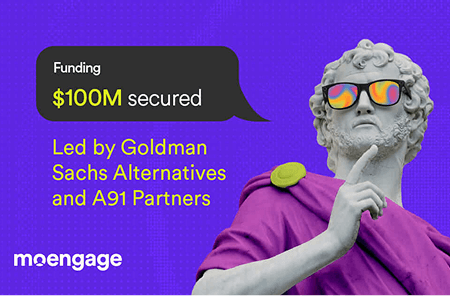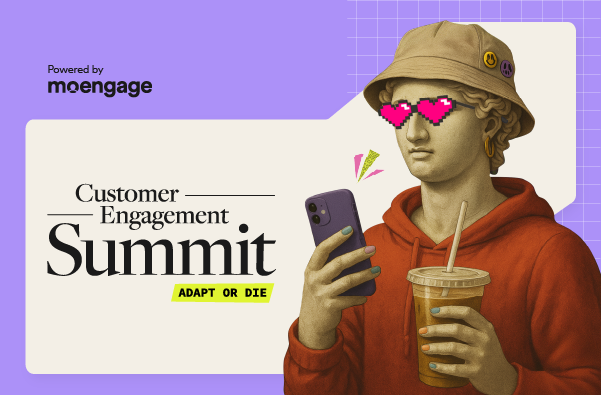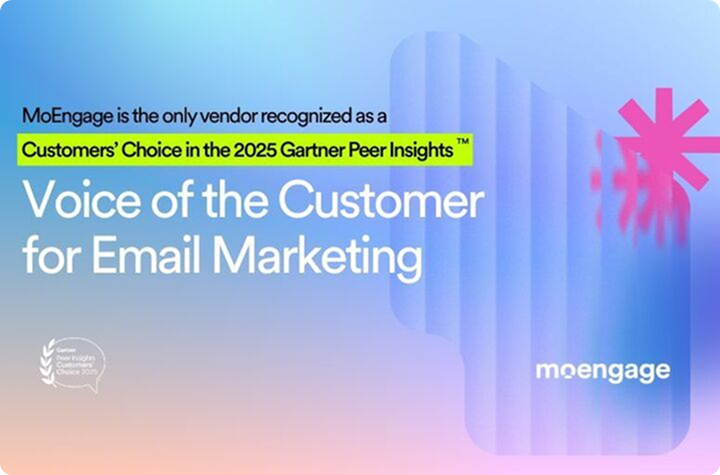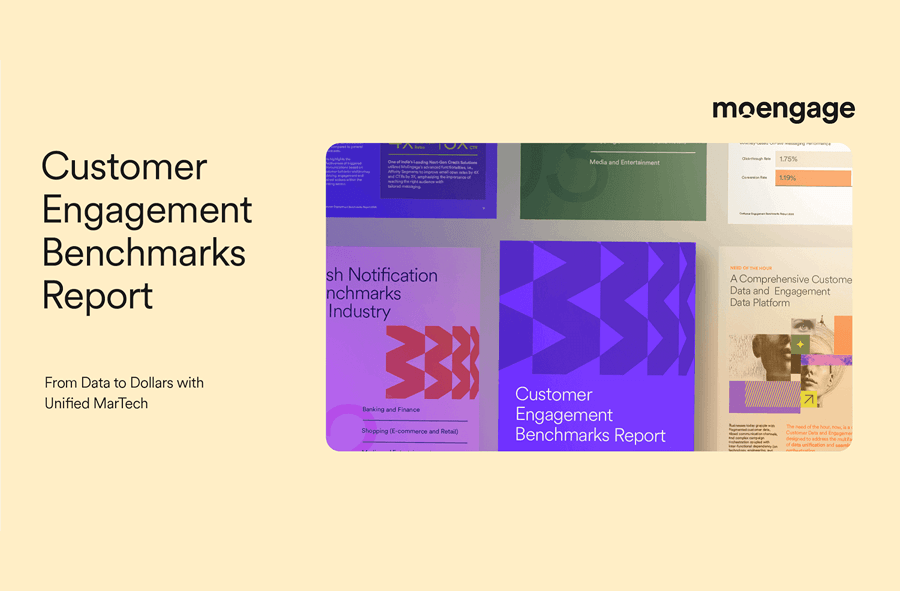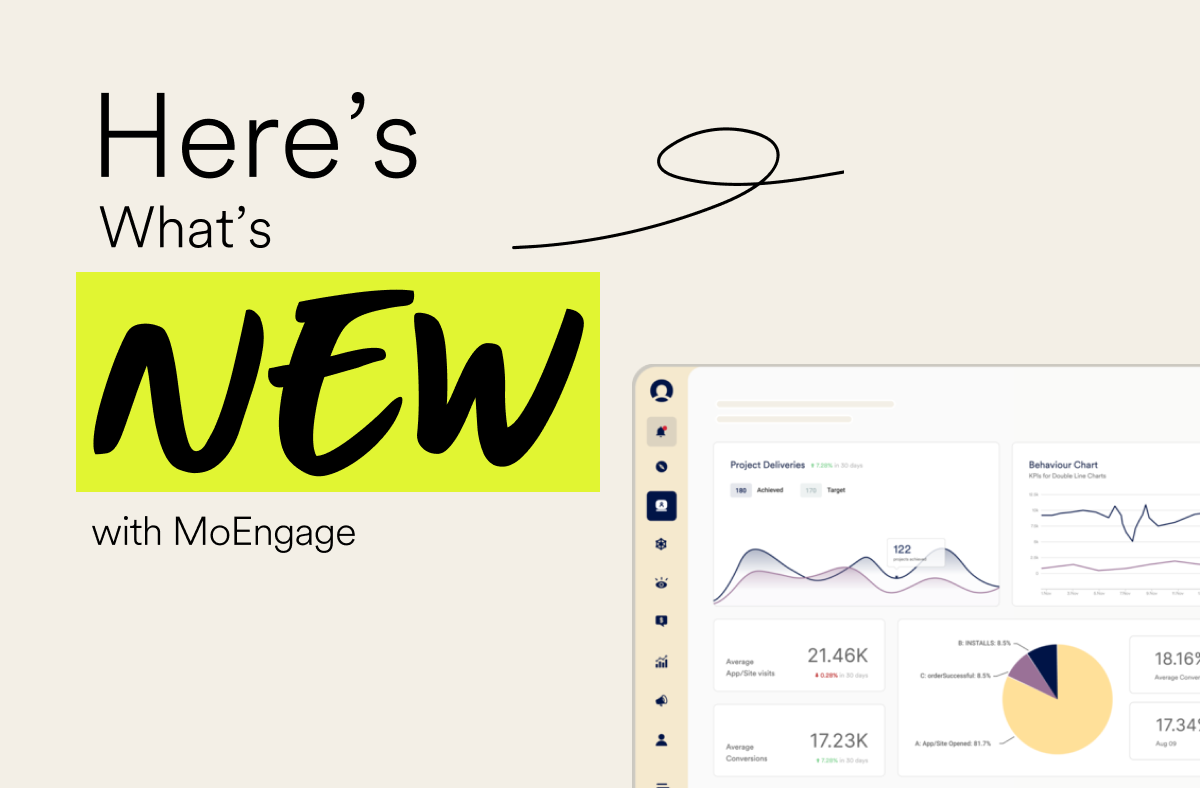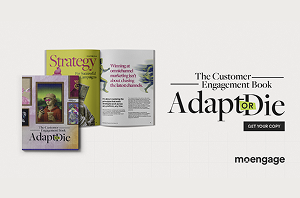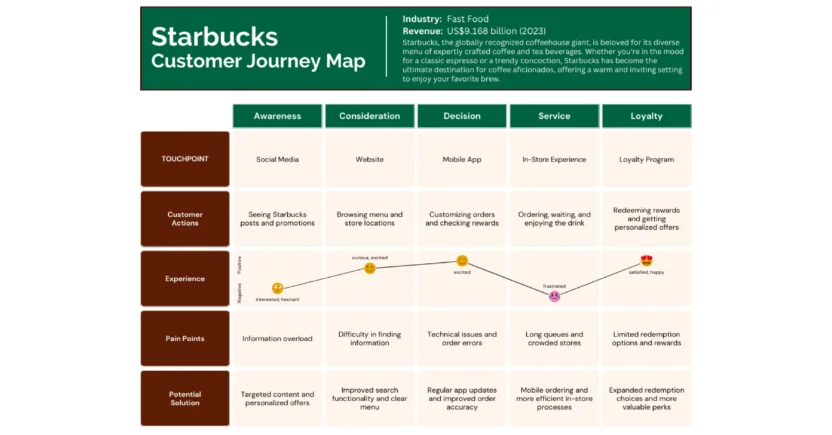How to Craft a Retail Customer Journey (With Examples)

Reading Time: 11 minutes
The retail customer journey has evolved significantly from the days when shopping meant simply walking into a store and checking out at the counter.
Today, retail blends the best of both worlds—physical and digital. Customers might scroll through products online, read reviews, visit a store to see or try an item, and then complete their purchase through whichever channel feels most convenient.
For modern retailers, understanding this journey is crucial to creating personalized omnichannel customer experiences that attract shoppers and turn them into loyal advocates.
This is precisely why building an effective customer journey in retail starts with analyzing every step a shopper takes, from awareness to purchase and beyond. It’s about taking the time to understand what delights your customers and what frustrates them.
Since retail journeys involve not just online experiences, but also in-store experiences, local shopping habits, staff interactions, and even regional preferences, each of these moments shapes how customers perceive a brand and whether they choose to return.
In this guide, we’ll explore how retail brands can create a unique customer journey, map it effectively, and use the right strategies to drive conversions both online and in-store.
What is a Retail Customer Journey?
A retail customer journey is the complete experience a shopper has with a brand, starting from the moment they discover it to the interactions that happen after a purchase. It covers every touchpoint, whether online or offline, including physical stores, websites, mobile apps, and customer service.
It’s not just about transactions, but about how customers feel every time they interact with your brand—before, during, and after a purchase. A strong customer journey in retail seamlessly connects these moments, enabling shoppers to easily transition between online browsing, in-store visits, and post-purchase engagement.
What makes a retail customer journey unique?
The retail store customer journey is truly special because of its sensory appeal.
Shoppers can see, touch, and try products before making a purchase, building emotional connections that digital stores often struggle to match.
The layout of a physical store, its music, lighting, and even the way your staff engage with customers all influence buying decisions and loyalty.
And today, the journey doesn’t stop at the checkout counter. Customers might start by researching online, visit a store to test a product, and later share their experience on social media. This blend of physical and digital touchpoints is what defines modern omnichannel retail marketing.
For instance, a shopper might spot a product on Instagram, check its availability on the website, visit a store to see it in person, and finally buy it through the brand’s app. Each step builds upon the last, creating a smooth and consistent experience that inspires trust and customer loyalty.
How to Build a Customer Journey Map for Retail
Creating a retail customer journey map is the first step toward understanding how shoppers move between channels, what drives their decisions, and where they experience friction. A well-structured customer journey map enables retailers to visualize every touchpoint, identify drop-off moments, and design experiences that seamlessly guide customers from awareness to advocacy.
Here’s how to build one effectively:
1. Collect and consolidate customer insights
Start by bringing together data from every touchpoint, including website visits, in-store purchases, app engagement, loyalty programs, and email interactions. Having all this information in one place provides a comprehensive view of your customers and helps you understand what truly drives their purchasing decisions.
Example: A beauty retailer discovers that customers who explore lipstick shades online often end up buying skincare products in-store. By connecting these insights, the brand starts recommending skincare bundles in follow-up messages, which helps increase their average order value.
2. Identify every key touchpoint
Each stage of the retail customer journey encompasses its own unique set of touchpoints, ranging from digital ads and push notifications to in-store experiences and checkout interactions. Understanding how these moments connect helps brands maintain consistent messaging and offers everywhere.
Example: A fashion retailer maps its customer journey and discovers that its cart abandonment emails didn’t match the discounts offered in-store. Once the two are aligned, conversions increase across both online and physical channels.
3. Define emotional and behavioral triggers
Understanding what customers feel and what motivates them is key to shaping a meaningful customer journey in retail. Whether they’re exploring a new collection or reacting to a sale, recognizing intent helps you create personalized customer experiences that feel relevant and timely.
That’s where customer journey automation comes in.
Example: A supermarket notices that customers who open “meal inspiration” emails on Fridays often visit the store over the weekend. They start sending personalized automated push notifications on Friday evenings, and this small change leads to a noticeable increase in weekend foot traffic.
4. Visualize different stages of the journey and the friction points
Mapping every stage of the customer journey, from awareness to post-purchase, helps you identify the moments that delight retail customers and those that cause frustration. It also shows where a little extra support or clearer communication could prevent drop-offs.
Example: A home decor brand discovers that many shoppers are abandoning their carts because delivery timelines aren’t clear. After adding real-time delivery updates, they see fewer drop-offs and build stronger trust throughout the customer purchase journey.
5. Continuously test, measure, and optimize
The retail customer journey is always changing. It evolves in response to new trends, shifting seasons, and rising customer expectations. To stay relevant, retail brands need to keep analyzing customer journey analytics, experimenting with new ideas, and refining experiences based on what works best.
Example: An electronics brand tests two types of post-purchase messages — one offering discounts and another sharing product tips. The results show that educational content drives higher engagement, leading the brand to build a new customer retention strategy around helpful, informative messaging.
5 Retail Customer Journey Examples to Learn From
Retailers that excel in business share one common trait: they remove friction and create moments that matter throughout the entire retail customer journey. Below are five brands that illustrate various approaches to achieving this.
1. Levi’s

Levi’s is reshaping the retail experience with its Project F.L.X. (Future-Led Execution) initiative, which uses laser technology to digitize the denim finishing process. This innovation lets customers design and personalize their jeans, choosing everything from the level of distressing to the fades, whiskers, and rips, through an interactive experience available online and in select stores.
By blending digital design with in-store production, Levi’s gives shoppers more creative control and a faster, more connected buying experience.
What they’re doing well
Levi’s demonstrates how legacy retail brands can utilize technology to enhance, rather than replace, the human aspect of shopping. By inviting customers to co-create their denim, the brand transforms a simple purchase into an act of self-expression.
This strengthens emotional connection and loyalty, while the in-store experience keeps the hands-on, authentic feel that Levi’s is famous for.
It captures attention through personalization, draws shoppers into experiential stores, and inspires post-purchase advocacy as customers proudly share their designs online. In doing so, Levi’s extends the customer journey beyond the sale, turning it into an ongoing conversation.
2. Sephora

Sephora’s Beauty Insider program has become the cornerstone of its luxury retail customer journey, showing how loyalty can evolve into a long-term relationship between brand and shopper.
The tiered program encourages customers to create beauty profiles, capturing data like preferences, skin type, and purchase history. This allows Sephora to deliver personalized product recommendations, curated tutorials, and exclusive offers across its app, website, and stores.
By integrating digital and physical touchpoints, Sephora turns every interaction into a tailored experience. Customers can try on products virtually using the Virtual Artist feature, book in-store consultations, and redeem points for luxury rewards or limited-edition beauty boxes.
What they’re doing well
Sephora understands that a strong customer journey in retail is built on both data and emotion. The brand uses personalization to make customers feel understood, while its community-driven approach builds deeper loyalty. Members are encouraged to share looks, reviews, and tips in the Beauty Insider Community, turning engagement into advocacy.
By keeping digital and in-store experiences connected, Sephora ensures consistency at every step. A shopper who browses online can find the same products waiting in their local store, along with tailored recommendations from in-store advisors. This seamless integration creates trust and reinforces Sephora’s position as a leader in the luxury retail customer journey.
3. Starbucks
Starbucks is a great example of how a brand can design a customer journey in a retail store that feels both familiar and personal. Their strategy focuses on making every touchpoint, from their cozy cafés to their mobile app, feel connected and effortless.
They utilize customer journey mapping tools and customer research to understand how customers interact with their brand, identify areas of friction, and enhance the overall customer experience.
The Starbucks mobile app plays a huge role in tying everything together. It lets customers order ahead, pay, and earn rewards, connecting convenience and personalization across multiple channels.
What they’re doing well
What Starbucks does particularly well is blend emotional connection with digital convenience. They continuously learn from customer feedback and use A/B testing to ensure every interaction, whether ordering a drink, chatting with a barista, or using the app, feels seamless and personal.
4. JP Morgan & Chase Payments
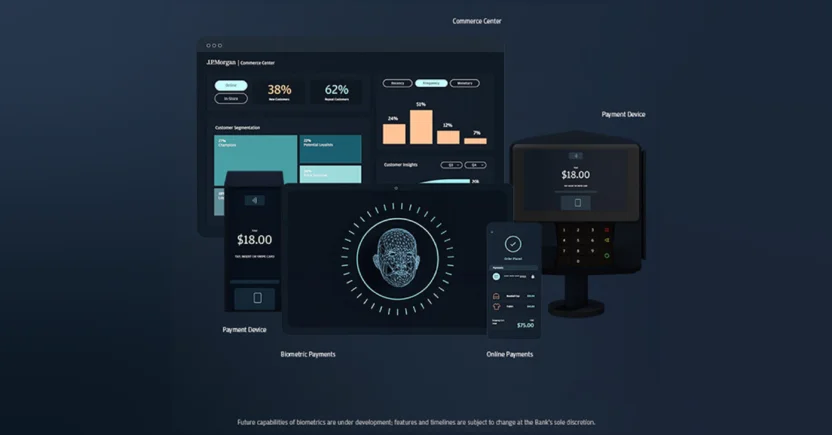
Source: https://www.jpmorgan.com/payments/solutions/commerce?source=nrf24_os_yt_hlhe_jpmf_sprvd
J.P. Morgan is reimagining the retail customer journey by bringing together payments, data, and embedded finance to create seamless shopping and banking experiences. Their strategy focuses on enabling brands and merchants to unify online, in-app, and in-store payments under one system.
This removes friction at checkout, whether a customer pays through biometrics, tap-to-pay, or mobile wallets.
By integrating insights and optimization tools into every step, J.P. Morgan helps businesses understand purchase behaviors across channels, much like a retail banking customer journey map identifies and connects key touchpoints from account opening to everyday transactions.
What they’re doing well
J.P. Morgan bridges the gap between commerce and finance. Their omnichannel payment ecosystem doesn’t just process transactions; it enhances the entire experience by using real-time engagement analytics to improve authorization rates and reduce payment failures.
This builds trust and reliability—two pillars of a great retail banking customer journey. The focus on embedded finance also shows how retail experiences are expanding beyond traditional boundaries.
Whether it’s a customer buying a product or applying for a store credit card, J.P. Morgan ensures the interaction feels unified and intuitive. This approach transforms payments into a strategic component of the retail experience, rather than just the final step.
5. Target
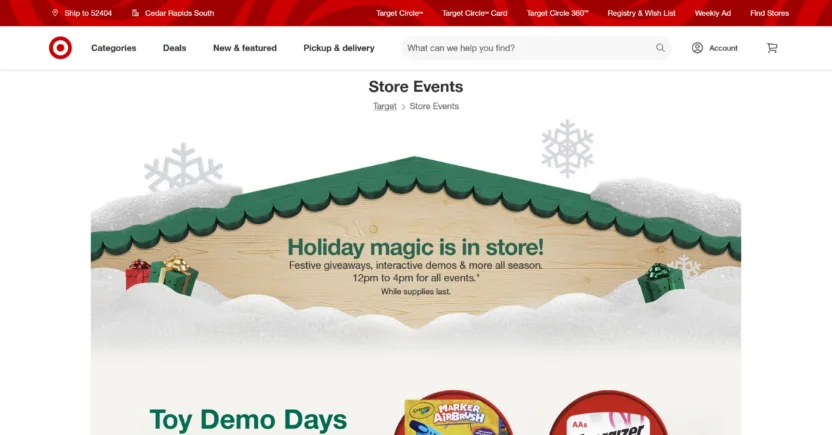
Source: https://www.target.com/c/store-events/-/N-9x2nj?lnk=C_StoreEvents_WEB-435646_4
Target is reimagining the retail customer journey by combining the best of physical, digital, and social shopping into one connected experience. Their strategy centers on personalization, utilizing AI to deliver more relevant product recommendations, enhance search accuracy, and integrate real-time social media trends into what customers see and purchase.
By expanding its Target Plus marketplace and onboarding hundreds of new brands, Target is providing shoppers with more choices while maintaining its signature balance of style, value, and affordability.
What they’re doing well
Target shows how a modern retailer can make every stage of the customer journey feel cohesive—from discovery on social media to purchase and fulfillment. Their focus on data-driven personalization turns casual browsing into a sense of “everyday discovery,” while their investments in faster fulfillment and loyalty rewards make the experience feel effortless and rewarding.
It’s a great reminder that innovation in retail isn’t just about technology; it’s about using that technology to make shopping feel more human, intuitive, and inspiring.
The Best Retail Customer Journey Tool to Boost Profits: MoEngage
Designing a great retail customer journey today isn’t just about being present on multiple channels—it’s about connecting them. From online browsing to in-store pickup, customers expect every touchpoint to feel consistent, personalized, and effortless. That’s where a retail customer engagement platform like MoEngage shines.
MoEngage helps retailers understand customer behavior, map out their journeys, and deliver timely, relevant messages that drive conversions and loyalty. Whether it’s a grocery chain optimizing order notifications or a fashion retailer personalizing recommendations, MoEngage provides brands with the tools to turn scattered customer interactions into a seamless, connected experience.
Let’s look at how leading retail brands are using MoEngage to simplify their customer journeys and boost profits.
1. Loblaw onboards transactional messaging campaigns in just 12 weeks
Loblaw Companies Limited, Canada’s largest retailer and private-sector employer, sought to unify its communication strategy across multiple brands, including PC Express, Joe Fresh, and Shoppers Drug Mart. Managing separate SMS and email vendors was slowing down teams and making it hard to create a consistent customer experience across touchpoints.
By partnering with MoEngage, Loblaw adopted a centralized platform for all transactional messages. Not only did they onboard the campaigns in just 12 weeks, but their engineering bandwidth also reduced by 70%.
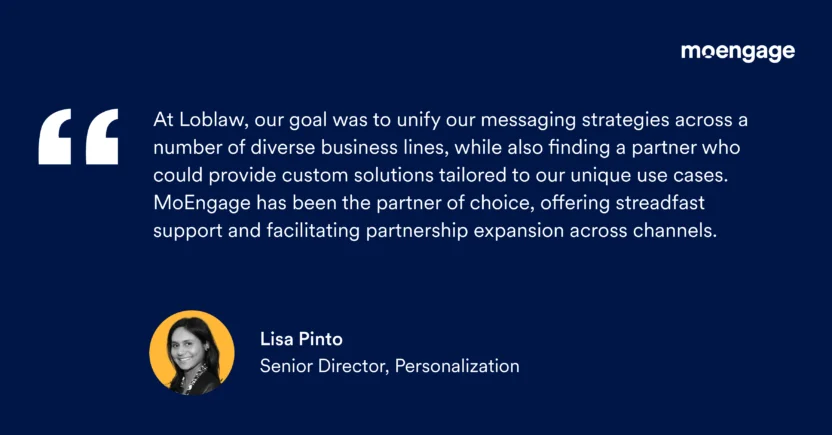
Using MoEngage Inform, they were able to manage communications across SMS, email, and push notifications from a single interface. This helped the retailer ensure instant, reliable updates for use cases like order confirmations, prescription refills, and sales alerts at all critical moments in the retail customer journey.
How this helped with retail customer journey execution:
MoEngage helped Loblaw create a seamless, cross-channel experience that made every interaction—whether a pharmacy alert or an online order update feel connected. This not only improved speed and consistency but also provided customers with a smoother and more trustworthy journey from purchase to delivery.
2. Outback Steakhouse personalizes engagement campaigns
Outback Steakhouse, a global casual dining chain renowned for its signature dishes and vibrant customer experience, sought to replicate the warmth and personalization of its in-store service on digital channels. With mobile app adoption growing, Outback’s marketing team needed deeper insights into customer behavior and a centralized engagement platform to deliver consistent communication across push notifications, emails, SMS, and WhatsApp.
By partnering with MoEngage, the team integrated its app using React Native SDKs and began leveraging data-led insights to trigger personalized, contextual messages.
MoEngage helped Outback launch tailored engagement campaigns faster, while frequency capping ensured customers weren’t overwhelmed by notifications.
How this helped with retail customer journey execution:
Outback could create a connected, data-driven retail customer journey with the help of MoEngage by aligning digital touchpoints with customer preferences and behaviors. Every message—from a push notification to a WhatsApp reminder—reinforced the brand’s signature hospitality and attention to detail, turning everyday app interactions into an extension of the #MomentoOutback experience.
3. Poshmark observes a 30% lift in conversions
Poshmark, one of North America’s leading fashion resale marketplaces, sought to bring personalization and precision to every step of its customer journey in the fashion retail industry. With millions of buyers and sellers interacting daily, the challenge was to create tailored experiences for two very different audiences — the “Listers” who post items and the “Sellers” who turn those listings into thriving mini-businesses.
By migrating to MoEngage’s insights-led engagement platform, Poshmark gained the ability to deliver personalized emails and recommendations at scale. Using AI-powered Flow Versioning and Smart Recommendations, the team optimized when and how messages were sent to each user segment.
The result? A 30% increase in conversions from listings to sales and up to 60% email open rates across campaigns like “Just Picked for You” and “Just In Listings.”

How this helped with retail customer journey execution:
MoEngage enabled Poshmark to design a data-driven fashion retail customer journey that feels deeply personal for every customer. By delivering timely, behavior-based nudges, the platform helped transform casual listers into active sellers while keeping both sides of the marketplace meaningfully engaged.
This level of real-time personalization not only improved sales but also deepened community trust, the backbone of Poshmark’s success story.
4. Cocomelody boosts repurchase rates by 27%
Cocomelody, a U.S.-based bridalwear brand renowned for making haute couture accessible to brides and their wedding parties, sought to reduce customer drop-offs and enhance online ad conversions. Despite a strong omnichannel presence, the team struggled with limited visibility into where customers abandoned their journeys and lacked dynamic personalization to effectively re-engage them.
By adopting MoEngage’s insights-led engagement platform, Cocomelody centralized customer data from boutiques and digital channels to uncover drop-off points, personalize engagement, and promote cost-effective categories such as ‘Try-at-Home’ and ‘Fabric Swatches.’
Using MoEngage Analytics, Omnichannel Flows, and Dynamic Product Messaging (DPM), the brand delivered behavior-based nudges through email, SMS, and push notifications — leading to 30% more sales under ‘Try-at-Home, a 69% boost in ROAS, and 27% higher repurchase rate.
How this helped with retail customer journey execution:
MoEngage empowered Cocomelody to craft a data-driven bridal shopping journey, from intent to purchase to repurchase.
By unifying data from online and offline channels, the brand gained a holistic view of shopper behavior, segmented customers by lifecycle stage, and delivered highly personalized, context-aware campaigns.
This seamless customer journey orchestration across channels reduced drop-offs, improved ad efficiency, and helped Cocomelody create lasting relationships with both brides and bridesmaids.
Executing a Seamless Retail Customer Journey: Final Thoughts
Building a truly seamless retail customer journey isn’t just about omnichannel presence. It’s about understanding intent, personalizing engagement, and acting on insights in real time. With MoEngage’s retail and Ecommerce customer engagement solution, retail brands can unify data, predict customer needs, and deliver meaningful experiences that drive loyalty and revenue.
Ready to discover how MoEngage can help you convert browsers into loyal customers? Request a demo today.

